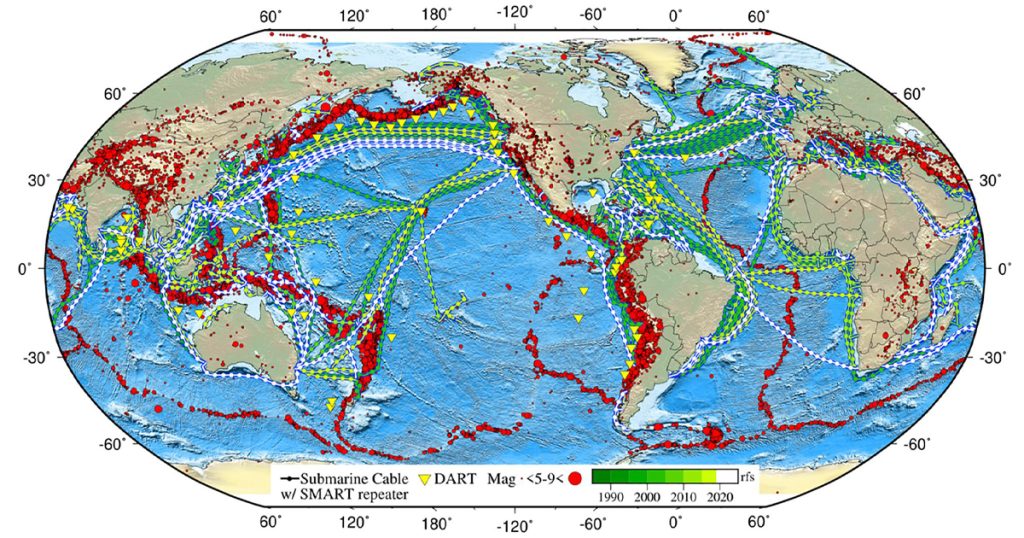Many of you will be aware of the concept of so-called “SMART” – Science Monitoring and Reliable Telecommunications cables. The idea is simple – to incorporate temperature, pressure and acceleration sensors into repeaters for the purposes of detecting earthquakes and tsunamis, studying climate and improving our knowledge of the Earth’s interior. However, the implementation has not been simple; despite a decade of study, no SMART cables have yet been developed or deployed. Naturally, the endeavor has chicken and egg syndrome: without a proven, working example, no one will undertake the effort to develop one. Anything that will slow the installation, increase the cost, or (possibly) reduce the reliability of a submarine cable system is anathema to developers and owners.
But the concept of SMART cables deserves a closer look. Important questions about the climate remain unanswered. The ocean is a huge reservoir for heat: how much does it hold right now? Earthquakes and tsunamis are unpreventable, but with better detection and response, lives can be saved. Would it be possible, or even practical to add sensors to repeaters? In the age of the Internet of Things (IoT), it seems only a matter of finding the resources. And while it may be years before major trans-ocean cables are SMART, regional and short-haul systems could provide this capability much sooner.
A major new white paper has recently been published in Frontiers for Science describing the scientific basis for SMART cables, laying out a plan for moving forward, and explaining the potential benefits. This paper is released in time for Ocean Observing 2019, a decadal conference which aims to set goals for the coming ten-year period. OSI’s Steve Lentz, Director of Network System Science and Engineering, one of the co-authors, invites you to read this paper, give it some thought, and, in whatever way you are able, help move the concept of SMART cables closer to reality. Please access the paper here: https://www.frontiersin.org/articles/10.3389/fmars.2019.00424/full
